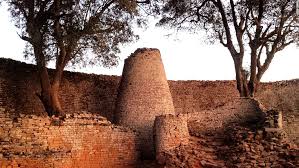ZIMBABWE, HISTORY OF ORIGIN

Great Zimbabwe Great Zimbabwe is a city that in time past had created certain impart on the long lasted civilization which Africa had experienced in the past. Proving the certainty of an age-long civilization is the debris left along the parts that once bore great walls. From the picture above, it is evident that some parts of the walls still stand to prove its solidity. It is undisputable, from feasibility study of this seeming indestructible structure, that monuments different from pyramids could last as long as their purposes could contain. Of course, without these wreckages there would be no ancient Zimbabwe other than ferry tells of concocted history. The walls stand memorably beyond the claim of storytellers. The significance of these walls do not only speak of the civilization of that African population, they also speak of the uniqueness of the people who built the walls; their predominant occupation and the circumstance


